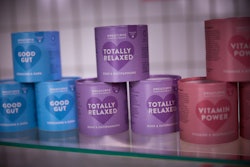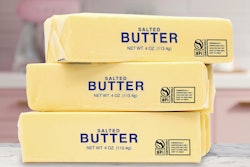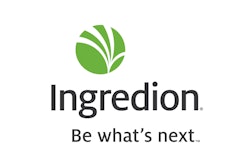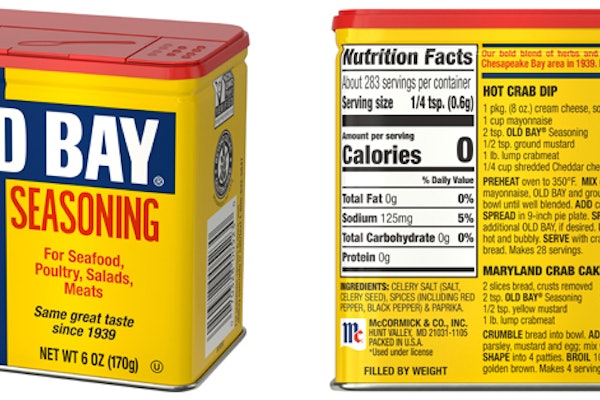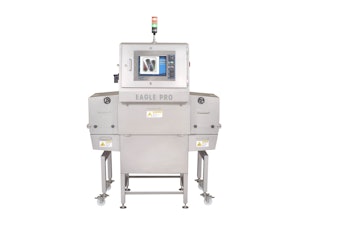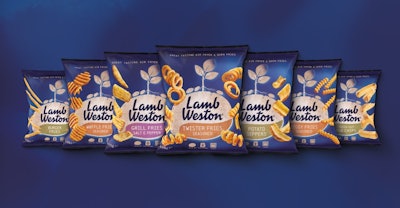
Lamb Weston, a global leader in frozen potato products, has introduced a circular packaging solution that uses its own used cooking oil to help produce the flexible film for its retail frozen fries. Developed with SABIC and Oerlemans Plastics, part of the OPACKGROUP, the film contains at least 60% certified bio-renewable polyethylene and delivers a 30% lower carbon footprint, aided by a 20% reduction in film thickness.
“Distributors, retailers, and consumers have become increasingly conscious of their environmental impact and show a growing preference for more sustainable packaging. We have anticipated this trend and developed an industry-leading bio-circular retail packaging solution for our pre-fried frozen potato products that provides a highly responsible value proposition,” says Sebastiaan Besems, Lamb Weston VP commercial EMEA.
 | Read this related article, “Brown is the New Green: Lamb Weston’s Recyclable Paper Fry Bag” |
“As part of our ambitious sustainability plans and innovations for the frozen potato category, the brand’s new European retail pack is made with 60% bio-circular plastic originating from Lamb Weston’s used cooking oil and is ISCC Plus certified,” he adds. “By using SABIC’s bio-renewable polymer, [along with] less and better packaging, this innovation reduces the carbon footprint of our retail bags by 30%, aligning with consumer expectations that FMCG brands are as environmentally friendly as possible. The success of this project also meets with our goals to halve our food waste, cut our overall product carbon footprint by 25% and move to more circular production by 2030.”
From fryer waste to functional film
The concept is simple but transformative. Used cooking oil from Lamb Weston’s production facilities is collected and refined into biodiesel by European company Quatra. A byproduct of that process—bio-naphtha—becomes the feedstock for SABIC’s Trucircle bio-renewable PE. The certified material is then converted into a mono-material, multilayer film by Oerlemans Plastics, and finally used on Lamb Weston’s vertical form/fill/seal lines for retail frozen fries.
“The packaging feels like normal plastic,” says Jolanda Dings, director of sustainability and external relations at Lamb Weston Europe. “It actually is plastic. But instead of virgin fossil feedstock, the source material is used cooking oil. That’s a meaningful shift.”
Dings shares that the packaging redesign was driven by internal sustainability goals rather than external mandates. “We set out to reduce our packaging’s carbon footprint by 30%. Packaging is about 5 to 6% of our product’s overall footprint, so this is a significant reduction in a small but highly visible component.”
 Infographic courtesy of SABIC, from its webinar, “Purposeful Packaging: Bio-Renewable Solutions”SABIC
Infographic courtesy of SABIC, from its webinar, “Purposeful Packaging: Bio-Renewable Solutions”SABIC
But the bio-based content alone wasn’t enough to get to the 30% carbon footprint reduction. Lamb Weston also reduced the film thickness from 70 microns to 55 microns—a 20% material savings—while maintaining seal integrity, machinability, and puncture resistance. “Our fries drop several meters into the bag during packaging,” Dings noted. “That creates high impact, and we needed the packaging to withstand it. Zero open seals and zero complaints were our baseline expectations.”
The final film, made from SABIC high-density polyethylene and Supeer metallocene linear low-density polyethylene, delivers the strength, flexibility, and sealing performance required for Lamb Weston’s frozen applications. Both resins are ISCC Plus certified and approved for food contact by the European Food Safety Authority (EFSA) and the U.S. FDA.
“This collaboration really demonstrates circularity in action,” says Khaled Al-Jalawi, SABIC’s global director of circular economy business. “We’re taking used frying oil and using it to create recyclable polymers in a certified, traceable system. The result is a lower-impact, high-performance packaging film.”
Retail rollout and what comes next
The first wave of Lamb Weston’s new bio-based packaging launched in September 2024 in the U.K., the Netherlands, and Italy; it is also being rolled out in the Middle East. Retail messaging highlights the bag’s renewable content. One example of the brand’s on-pack communication reads, “Did you know our bags are made with 60% bio-circular plastic?” The project also earned recognition as a finalist in the Dutch Circular Economy Awards.
For Lamb Weston, this packaging marks a larger shift. “Retail is a strategic growth pillar for us,” says Dings. “It’s where consumers see and feel the brand. It’s also where packaging becomes a communications tool. This innovation sends a clear message.”
The company’s longer-term packaging strategy is aligned with the EU Packaging and Packaging Waste Regulation (PPWR), which will eventually require food packaging to contain post-consumer recycled content. “The next step for us is to include 10% PCR,” says Dings. “It’s not yet legally allowed in food-contact applications, but we’re preparing now.”
As Lamb Weston looks toward 2030, its goals include reducing its overall product carbon footprint by 25%, halving food waste, and advancing toward fully circular production. Drawing on her experiences with the new retail bag, Dings advises brands seeking to create reduced carbon-footprint packaging solutions to embed sustainable packaging goals into their business strategy. “And above all, collaborate,” she says. “Partnerships like this one are what make real progress possible.” PW


